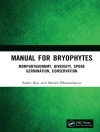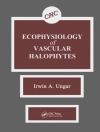Botanical aesthetics are the visual and embodied modes which inform the perception, understanding, and appreciation of plant life. Green Sense is an interdisciplinary study of human relationships to wild plants and the ‘cultures of flora’ that may characterise a region. The book explores botanical aesthetics through a study of the South-West region of Western Australia; a biodiversity ‘hotspot’ of international standing. Through a diverse range of materials, approaches, and perspectives, this title points to the interplay of values involved in cultures of flora, from visual aesthetics and scientific knowledge, to embodied appreciations and sensory entanglements. The book aims to better understand human relationships to wild plants, and offers an intriguing journey through science; poetry; philosophy; ethnography; Indigenous Australian knowledges; and regional tourism and memory studies.Green Sense will appeal to academic researchers, and all those interested in the hidden aspects of the human relationship with plants.
Readership
Botanical researchers, thinkers, and advocates; plant lovers, bushwalkers, wildflower tourists, phenomenologists, philosophers, historians, geographers, ecocritics, scholars of cultural and memory studies, and those interested in environmental creative writing.
Contents:
Prologue: Seeing-feeling-thinking flora; Part I Restoring sense to plant research: Cultures:The technicised plant in nature’s laboratory; Reconciling the “Two Cultures†schism; Towards transdisciplinary botanical thinking; Poeticising plant research: Floral poetics; Cultural botany: Bridging two cultures, building on cultural ecology; Fields; Introduction to the South-West; Reconfiguring botanical field work; Poetic enquiry into South-West flora; Ethnographies along the South-West wildflower trail; Gestural walking; Place as context; A practice of aesthesis; Part II Botanical Histories: Narratives: Thoreau’s approach to multiple narratives; The narrative streams of Zamia Palm; Nyoongar conceptualisations of plants; Plant narratives and aesthetics; Values: Plants and aesthetics: Reading Lindley’s sketch; Words and images: The anatomy of a botanical document; Metaphors and misnomers: Characterising the Swan River Colony; Vision and beauty: The Horticultural Object; Botany and commercialisation: Multi-sensoriality in economic terms; Colonisation and classification: Naming plants; Absences and aesthetics; Aesthetics: Plants as objects of sight: From visuality to sensation; Plants as objects of art: From artefacts to habitats; Plants as objects of disinterestedness: From detachment to engagement; Plants as objects of scientific discourse: From reason to embodiment; Theorising a corporeal aesthetics of plants; Part III Botanical Cultures: Green: Green speak; The positive-negative nature of green; Green fertility, dun sterility: South-West Australian contexts; Hope and Stegner: Unravelling greenness; Towards an aesthetics of xeriscapes: The Ravensthorpe Woman; Ethnography:Anthoethnography and the culture of wildflowers; What does wildflower tourism entail?; Breath of the bush: The history of South-West wildflower tourism; Mediation of presence: Contemporary wildflower tourism in the South-West; Anthoethnographic themes at wildflower venues; Beyond the flower: From wildflower tourism to botanical appreciation; The promise of anthoethnography; Memory: Remembering plants; The physiology of human memory; Botanical memory at the intersection of embodiment, environment, emotions, and ethnography; Botanical memories of mourning: Biodiversity, beauty and grieving; Botanical memories of celebration: Orchids, love and rapture; Botanical memories of embodiment: Sucking; Banksia nectar; The intricacies of botanical memory; Part IV Botanical Languages: Language; Gathering of tongues: Aesthetic language and flora; When language speaks, who listens?; Language, vision and flora: Towards “the Openâ€; Language, senses and flora: Botanical metaphor; Towards a language of plants and sensation; Poetry: Poeticising flora; Landscape poetry and habitat poetry; Reading Lansdown, Choate, and Kinsella as habitat poets; Celebration of landscapes and appreciation of habitats; Part V Botanical Futures: Mourning: A ‘species’ is bodiless; The Sixth Great Extinction; Landscapes of absence; Botanical , emorials; From subject-centred mourning to connectivity mourning; Mourning the loss of flora; Walking: The botanising stroll: People embrace the bush; Techniques of walking: The habitus of bipedal , ovement; Distance and contact: Early South-West walkers and botanisers; Walking the flowering Landscape: Metavisual appreciation of plants; Bodily interaction and embodied appreciation; Aesthesis: The bodily senses and flora; Aesthesis: Perception and sensation; Floraesthesis and the metasenses; Body futures: Healing, wellbeing and flora; Aesthetics and aesthesis: Theorising bodily appreciation of flora; Coda: Prospects: Philosophical implications: Questions of intimacy and union; Past into present: Researching cultures of flora; Implications for creativity: Environmental practices and processes; Conclusion: Possibilities for ecocultural studies and the humanities; References












